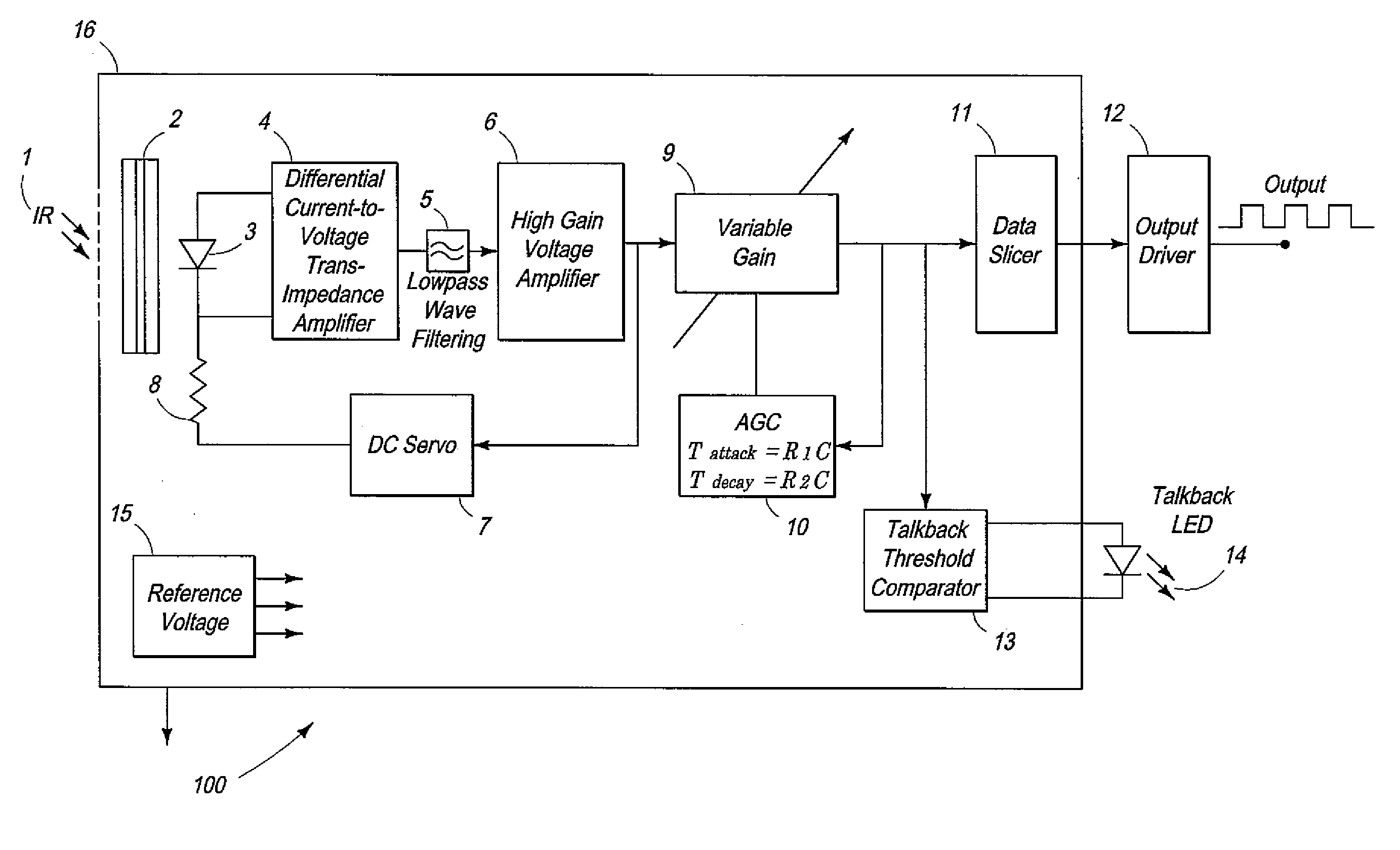Infrared remote controls are typically limited to line-of-
sight applications.
However, increased
bit rate comes at the cost of symbol size.
Therefore, the transmitted symbols are less distinct and become exponentially more prone to
noise-induced errors due to a reduced time interval between symbols (
guard interval).
In other words,
noise susceptibility, where one symbol is mistaken for another, increases when more symbols are packed into the same time interval.
However, a carrier generator for
QAM must have low
phase noise and has no practical, low cost solution for the very high frequencies (approximately 300,000 GHz) of
infrared communication.
However, as the symbol length increases, the
time difference between adjacent symbols decreases, thereby increasing susceptibility to
noise and
crosstalk.
However, regardless of format, infrared remote control signals all consist of a succession of carrier bursts and gaps.
However, this relatively short mark time presents a significant challenge to infrared repeater systems.
These relatively tight tolerances are not met by conventional infrared repeater systems.
Simply put, the timing fidelity of an infrared repeater
system of a
high density code is a challenging problem.
Conventional repeaters operate under conditions of a conventional 20-40 cycle burst length and are not designed to
handle signals with short burst lengths such as 6 cycles.
Conventional infrared sensors also create
distortion in a signal and provide a limited
low frequency response resulting in a
baseline shift and droop of an amplified infrared signal caused by the unipolar nature of the received infrared signal and capacitive interstage
coupling.
However,
baseline shift is an acute problem with high-density codes where the carrier bursts are only a few pulses long.
For example, the RC-MM code uses carrier bursts six pulses long such that an extra pulse will cause significant
distortion.
Baseline shift / droop errors in
high density codes can range from occasional decoding errors to a complete inability to decode an infrared signal.
Furthermore, if the decoder utilizes envelope detection rather than
pulse counting, then the detected pulse will be longer than intended, and will consequently shrink the inter-burst gap that must be preserved if the signal is to be correctly processed.
Conventional infrared repeaters provide an adequate single-pole (−6 dB /
octave)
high frequency response of approximately 100 kHz, but usually have a
low frequency response that rolls off at too high a frequency, typically around 20 kHz (which causes the
baseline shift, due to the unipolar nature of infrared signals, to have excessive droop), and at an excessive rate (−6 dB /
octave per
capacitor), with consequent excessive low frequency phase shift, due to the use of too many inter-stage
coupling capacitors (typically 4 or 5).
In low-density infrared formats where there may be twenty carrier cycles per mark, the presence of one or two extra pulses will not usually present a problem significant enough to cause an error.
However, in high-density formats of six cycles per mark, one extra pulse will provide a proportionally much more significant
distortion and a
high likelihood of errors.
The drawback to this method is the increase in
settling times which slow the adaptability of the sensor to changes in the infrared interference background.
Therefore, using larger inter-stage
coupling capacitors to remove baseline droop and
ringing solves one problem but creates the more serious problem of increased
settling time.
In addition to the timing problems inherent to a
high density code, the infrared signals are distorted by the environment which it travels through and increase the difficulty in maintaining mark / space timing tolerances.
Electrical noise is also generated internally in repeater components such as the sensor.
However, these strategies do not allow for efficient error correction, and require the infrared sensor to be redesigned for a particular environmental interference parameter.
Another approach of an infrared repeater that fully
decodes an infrared signal before re-transmission suffers from latency issues and the inability to
handle unknown codes.
 Login to View More
Login to View More  Login to View More
Login to View More 


